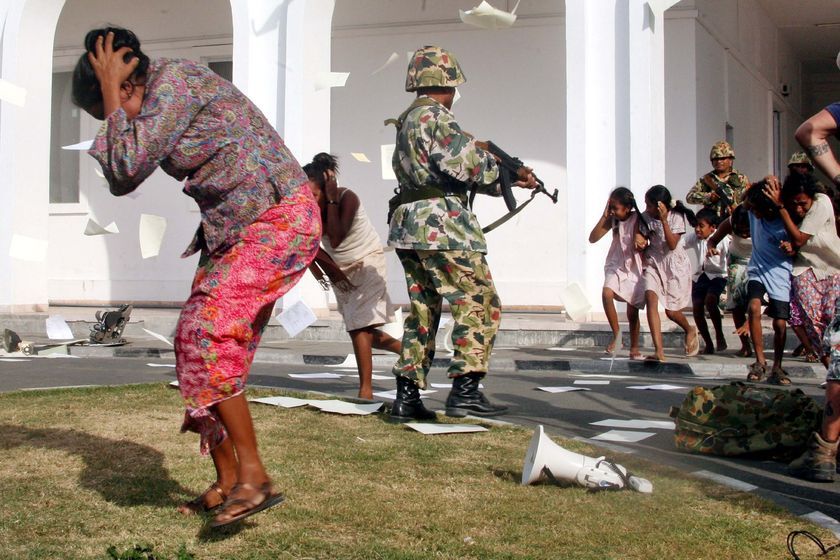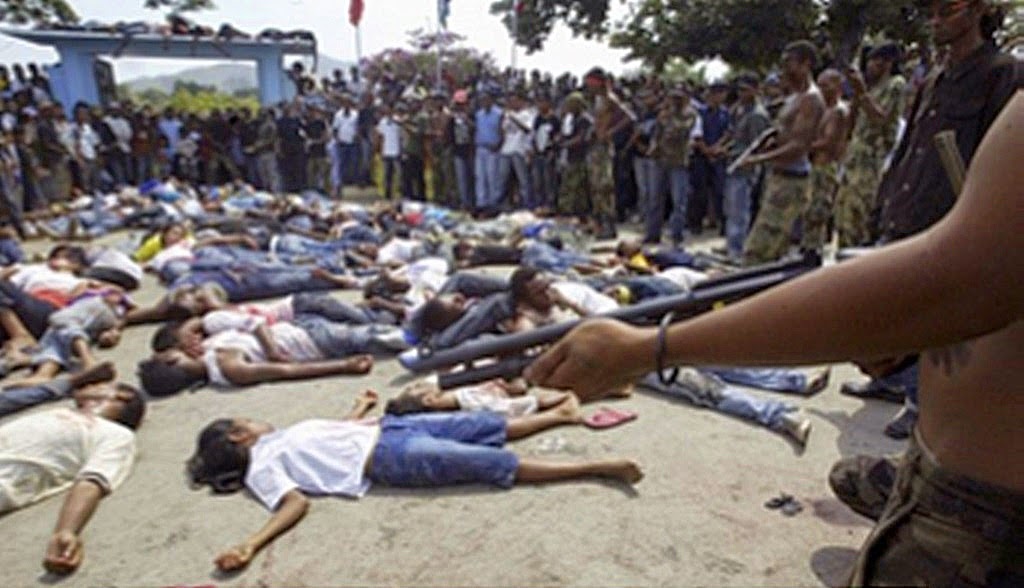In this month’s Blog article, I share a reflection by Brian Gleeson, CP, on the East Timorese struggle for independence.
Lest we forget!
Timor-Leste (East Timor), an island nation north of Darwin, Australia, is one of the world’s newest countries. It has a long history with the Catholic Church, beginning with its colonization by the Portuguese Dominican mission in 1556. Timor-Leste was under Portuguese rule until it joined other Portuguese colonies in declaring its independence on November 28, 1975. Nine days later, it was invaded by Indonesia and struggled for independence until the international community finally responded in 1999. During the occupation, much of Timor-Leste’s already fragile infrastructure was destroyed, and even today the country is still recovering.

Thanks to the international news media, in 1999 the world became aware as never before, of the people of East Timor. Many people cheered at the good news that 78.5% of the East Timorese had voted for their independence from Indonesia, whose armies had invaded and annexed their territory in 1975. Their hopes were shared across the world, that at long last they would be free to decide their own future, to choose their own leaders, and to govern themselves.
Within days, however, the hopes of the world’s newest nation turned sour. A local minority, made up mainly of murderous militias, armed to the teeth by the recently occupying Indonesian army, would not accept the people’s vote. They therefore turned against the majority of their fellow-citizens with a ferocity equal to anything that has ever been perpetrated against innocent people anywhere. In Dili, the capital, and in other cities and towns throughout the territory, these militias maimed and murdered thousands of pro-independence supporters, drove thousands from their homes, and forced thousands more to leave their own country as refugees. Once the people were gone from their homes, these militias systematically looted and plundered the people’s possessions, before finally burning their houses, their shops, and many of their public buildings to the ground.

What the world witnessed, thanks to the extensive news coverage, was nothing less than the implementation of a ‘scorched earth’ policy. It was as horrific as the sending of six million Jews to the gas chambers during World War II, the mysterious ‘disappearances’ of hundreds of citizens in Argentina and Chile during the military dictatorships there, and the more recent campaigns of so-called ‘ethnic cleansing’ in Bosnia and Kosovo.
It has been as totally baffling and unexpected that in our own time, human beings could treat one another with such hatred and violence. Perhaps as baffling and unexpected as the way Jesus was treated by the Jewish leaders of his time. God, the owner of the vineyard, expected his tenants to yield a harvest of ripe grapes, but it was sour grapes (vinegar) only, that they produced.
In Timor-Leste, the torture, the suffering, and the crucifixion of Jesus happened all over again. Night after night, television screens displayed scenes of undiminished horror that left viewers wondering: Is there any hope for these poor broken people? Does anyone care?’ Perhaps some even wondered: ‘Does God care?’
It was just then, when all seemed lost, and after both the humanitarian agencies of the International Committee of the Red Cross and that of the United Nations were thrown out of the country, that the world became aware of two marvellous initiatives and developments. In the midst of the carnage and destruction, the first powerful ray of hope came from the leaders of the Church. Priests, nuns, and other church workers, had constantly supported the people, 98% of whom were Catholic, in their quest for human rights, democracy, and self-determination. (Church support and protection for freedom and justice, in fact, went back to the days when Timor-Leste had been a colony of Portugal). During this time, for that love and loyalty towards their people, many church persons paid the ultimate price. They too were expelled from their homes. They too were mutilated. They too were murdered. They too saw their own houses, and the church buildings of their people, ransacked, robbed, and burnt to cinders. But their great witness of faith during that darkest period of their history, was not in vain. Put to the test, they yielded an abundant harvest for God and for God’s people.
The second ray of hope, which arrived later, was the preparation and deployment of the Interfet (the International Force for East Timor), led by Australian troops. At enormous personal risk, this Interfet force went in to protect the surviving East Timorese from further murder and mayhem, and to prepare for the re-building of their country almost from zero. Viewers became amazed at the integrity, the decency, the humanity, the generosity and the restraint of the troops, who, under mandate of the United Nations, entered East Timor not as aggressors but as peace-keepers and Good Samaritans, indeed as agents of divine mercy and compassion.

Finally, the fruits of Timor-Leste’s struggle for independence were firmly established on May 20, 2002. Further good news is that, bit-by-bit, its relationship with its former enemy has steadily improved. Today the relationship is quite peaceful and harmonious, and Indonesia is Timor-Leste’s main trading partner, and regularly contributes to its development.
Let us pray that God will continue to bless and protect the government of Timor-Leste, its peace-keeping forces, its Church leaders and workers, and the people of God entrusted to their care.
